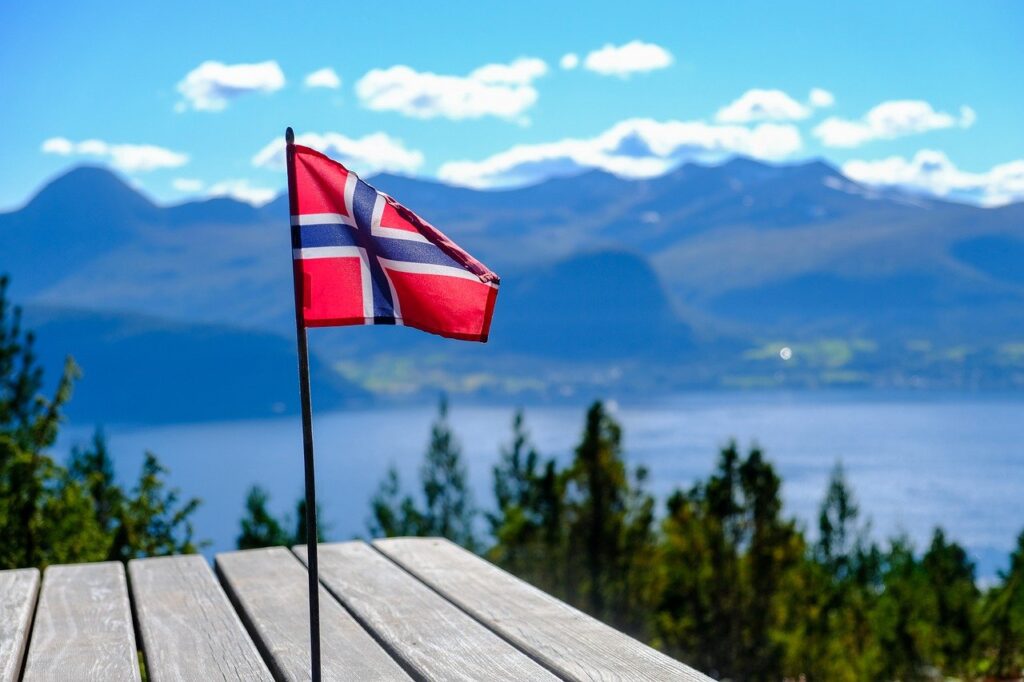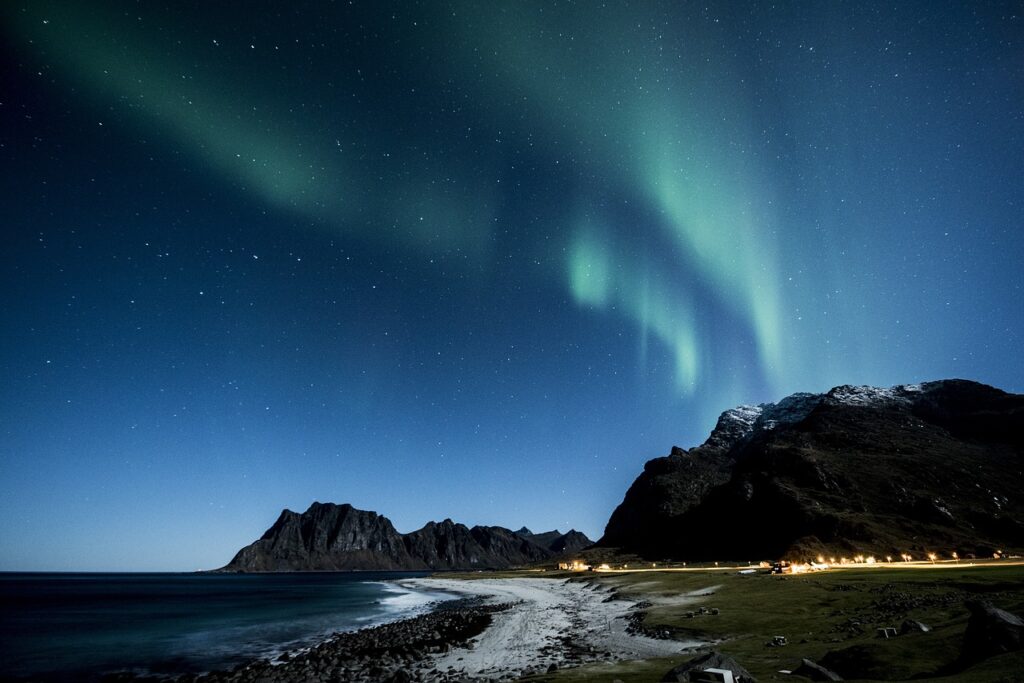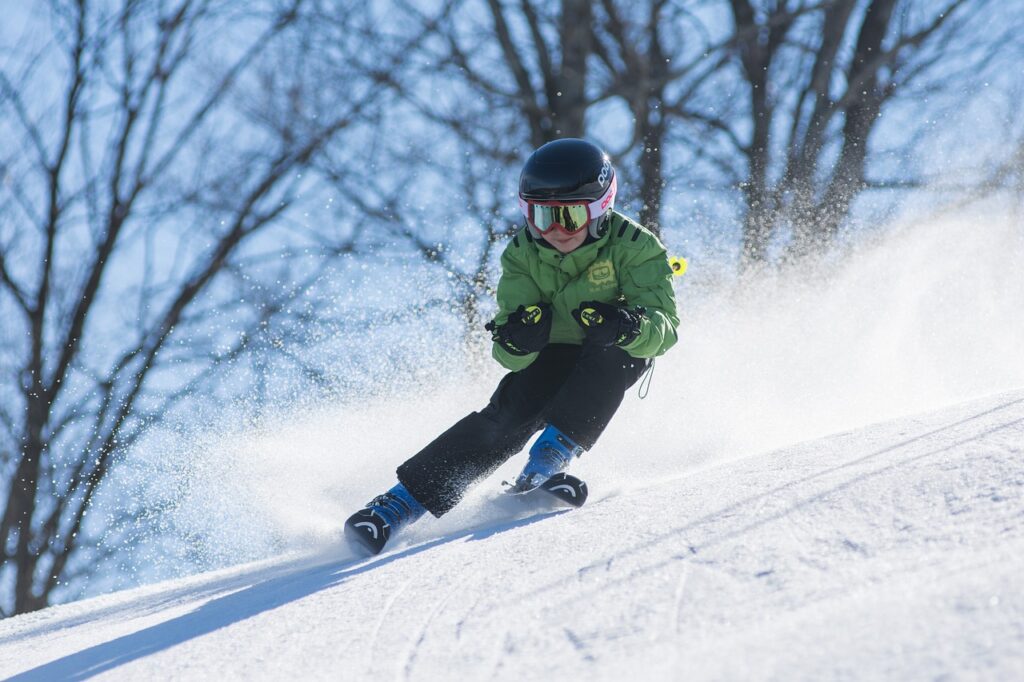Travel Tips: When is the Best Time to Visit Norway?

Intro
From breathtaking fjords to majestic mountain landscapes, Norway is a spectacular destination that offers a vast array of unique experiences year-round.
However, choosing the best time to visit Norway can significantly enhance your travel experience. With this in mind, we’ve crafted this guide to provide you with essential insights into Norway’s climate, popular activities, and off-peak travel considerations.
Understanding Norway’s Climate
The climate in Norway is incredibly diverse, primarily due to its extensive coastal area and significant stretch from north to south.
Coastal regions typically bask in a milder climate year-round, an effect brought about by the Gulf Stream’s warm ocean currents. In contrast, the inland areas are prone to more severe temperature variations with colder winters and warmer summers.
Venturing into the northern parts of the country, within the Arctic Circle, gives you an opportunity to witness two extraordinary natural phenomena. During the summer months, the region experiences the Midnight Sun, where the sun does not set for weeks, even months, leading to virtually 24-hour daylight.

Conversely, in the winter, it undergoes Polar Nights where the sun does not rise above the horizon, leading to continuous darkness. These contrasting experiences are unique to the northernmost areas and provide visitors with exceptional spectacles.
However, it’s crucial to remember that Norway’s climate is just as diverse as its landscapes. The fjords and mountains in the west can experience different weather conditions than the plains and forests in the east, even within the same season. Similarly, southern Norway’s weather conditions can greatly differ from those in the far north.
Understanding these climate nuances is key to determining the best time to visit Norway, as it depends largely on your planned activities and the specific regions you wish to visit. Therefore, it’s essential to consider Norway’s diverse climate when planning your visit, allowing you to make the most out of your Norwegian adventure.
Best Time to Visit Norway
When planning a trip to Norway, consider what activities you want to do and what natural wonders you hope to see.
For those longing to view the magical Northern Lights, book your trip between late September and late March. The Polar Nights of this period in Northern Norway create the perfect backdrop for this natural phenomenon.
If winter isn’t your season, not to worry. Norway is just as enchanting in the warmer months.
Summer, spanning from June to August, is the optimum season for outdoor activities. The Midnight Sun during this period ensures long days and warm weather, making it perfect for hiking, camping, and fishing.
If you’re hoping to experience Norway’s iconic fjords, summer offers the most comfortable conditions for exploration, either on foot or by boat.
That being said, every season in Norway has its unique charm and activities to offer.
Therefore, the best time to visit Norway ultimately depends on what you want to experience during your trip.
Whether it’s the captivating Northern Lights, the Midnight Sun, or the country’s dramatic landscapes, Norway promises an unforgettable adventure at any time of the year.
Pictures of Norway Across the Seasons

Exploring the enchanting landscapes of Norway through imagery reveals the distinct splendor each season bestows upon the country.
Photographs captured during the winter months often depict the magical aurora borealis illuminating the dark Polar Nights, tranquil scenes of snow-blanketed forests and towns, and traditional Sami reindeer sledding.
As winter recedes, spring emerges, giving way to an array of colors. Images from this season highlight the blossoming fruit trees in the orchards of Hardangerfjord, the receding ice revealing the majestic fjords beneath, and wildlife awakening from their winter hibernation.
When summer arrives, the scenery transforms yet again. Pictures from this season feature the lush green landscapes, towering waterfalls, and serene fjords bathed in the golden glow of the Midnight Sun. The long days of summer also allow for captivating images of hikers traversing the country’s rugged terrain and fishermen nestled in peaceful, sunlit nooks.

As summer fades, autumn ushers in a stunning display of fall foliage. The eastern forests and mountains are painted in rich hues of red, orange, and gold, making for extraordinary photo opportunities.
The serene reflection of the autumn colors in the fjords and lakes create a mesmerizing spectacle that is quintessential of this season in Norway.
Images captured in each season not only showcase Norway’s astounding natural beauty but also provide a visual guide for what travelers can expect during their visit.
They serve as a testament to Norway’s ever-changing landscape and the diverse experiences it offers throughout the year. With such a vast array of scenic beauty, it’s no wonder that pictures of Norway continue to captivate and inspire travelers worldwide.
Popular Activities and Their Ideal Seasons

Each season in Norway offers unique opportunities for various activities, thanks to the country’s diverse climate and landscapes. Winter, with its snow-covered terrain, sets the perfect stage for thrilling activities such as skiing, snowboarding, and dog sledding.
Norway’s extensive mountains and plentiful snow make it a winter sports paradise. The Polar Nights also offer a unique opportunity to engage in nighttime activities under the mesmerizing Northern Lights.
When summer arrives, the Midnight Sun ushers in long, warm days perfect for outdoor adventures. Hiking is particularly popular during this time, with trails ranging from easy walks in the countryside to challenging treks in the mountainous regions.
Cycling is another excellent way to explore Norway’s breathtaking landscapes, with countless routes suitable for all levels. The long summer days also make fishing an enjoyable pastime, whether in the tranquil fjords or the roaring rivers.

Spring and fall in Norway, characterized by milder weather and less crowded tourist sites, provide optimal conditions for city exploration and cultural immersion. This is the ideal time to visit museums, art galleries, and historical sites without facing large crowds.
The temperate climate during these seasons also makes for comfortable conditions to stroll through Norway’s charming towns and vibrant cities.
Off-peak seasons, such as late spring and early fall, offer unique opportunities for wildlife spotting. During these periods, animals are often more active, and birdwatchers will appreciate the influx of migratory birds. The colorful autumn foliage also creates a stunning backdrop for photography enthusiasts.
No matter the season, Norway’s ever-changing landscapes offer a host of activities to immerse yourself in.
So whether you’re a thrill-seeker looking to conquer the snowy peaks, an explorer wanting to delve into rich Nordic history, or a nature enthusiast hoping to witness unique wildlife, you’ll find an activity perfectly suited to your tastes and the season of your visit.
With the right planning, each visit to Norway can offer a new and exciting adventure.
Considerations for Off-Peak Travel
Choosing to explore Norway during the off-peak seasons of spring and fall can bring its own unique set of advantages. Although it may be considered ‘off-peak,’ these seasons provide an exceptional array of experiences and opportunities for travelers.
One of the primary benefits of off-peak travel is the reduction in tourist numbers.

With fewer visitors, you can expect a more serene and personal experience, whether you’re navigating the vibrant streets of Oslo or venturing into the heart of Norway’s wild landscapes. Attractions that may be crowded during the peak seasons will be more accessible and enjoyable.
Another notable advantage of off-peak travel is the potential for cost savings. During these seasons, travel expenses such as flight fares and accommodation rates are often significantly lower. This can provide a more economical option for those traveling on a budget or looking to extend their stay.
While some tourist sites may adjust their opening hours or close during these seasons, this doesn’t mean you’ll miss out on Norway’s stunning natural beauty or cultural offerings. The cities remain as lively as ever, and the landscapes change with the seasons, offering new perspectives and experiences.
A walk through a city park during the spring bloom can be just as rewarding as a summer hike, and witnessing the fiery colors of autumn foliage can be just as breathtaking as the winter snowscapes.

When planning your off-peak visit, remember to account for the variability in weather conditions. The weather can be somewhat unpredictable during these periods, with a chance of encountering both warm, sunny days and cooler, rainy ones. It’s always wise to pack a variety of clothing to cater to these fluctuations.
Additionally, off-peak seasons present unique opportunities for wildlife spotting. Spring and fall are transitional periods for many species, leading to increased activity that can enhance your chances of unique wildlife encounters.
All in all, off-peak travel in Norway can be just as enriching and enjoyable as visiting during the peak seasons.
With fewer tourists, potential cost savings, and unique seasonal offerings, these periods present an opportunity to experience Norway in a different light. It just requires a bit of flexibility and openness to embrace whatever the season brings.
The Impact of Climate Change on Norway’s Seasons
Climate change is reshaping Norway’s seasonal patterns, leading to considerable variations in weather conditions.
The typically frigid and long-lasting winters are gradually becoming milder and more concise, while summers are witnessing increased temperatures and more recurring heatwaves.
This evolution could potentially impact the ideal timing for certain activities and visits to Norway.
Despite these changes, Norway remains steadfast in its commitment to promoting sustainable tourism and fortifying its resilience to climate change.
This commitment ensures that regardless of climate fluctuations, Norway will persist as a remarkable year-round travel destination.

[…] design of the Norwegian flag is inspired by the flag of Denmark, as Norway was previously under Danish rule. However, the colors were inverted to differentiate Norway’s […]